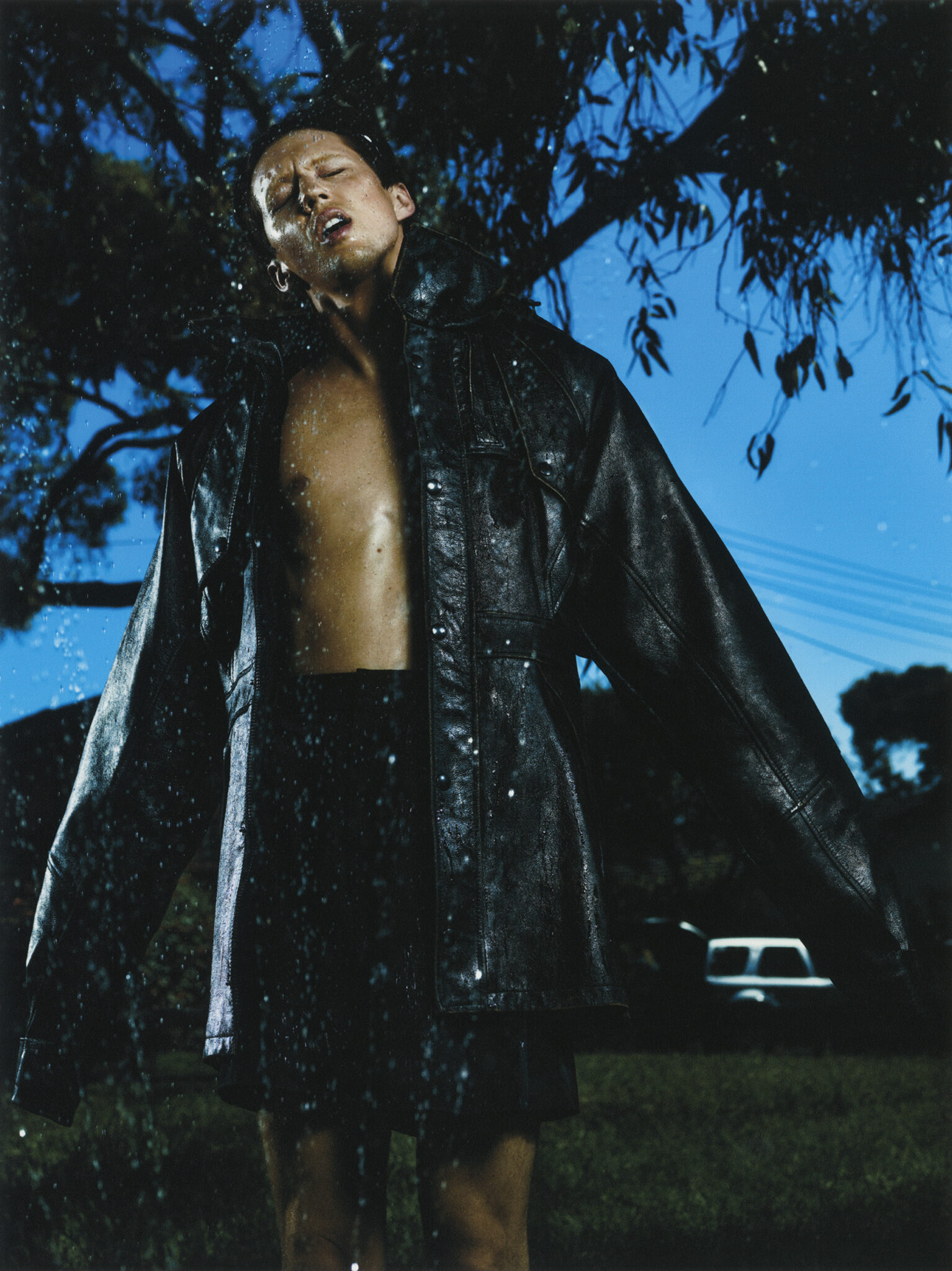Something feels predestined about Troye Sivan’s fame, like it was only a matter of time before this kid with the big baby blues and a riveting mix of self-possession and vulnerability would find his way to a global audience. “I started making YouTube videos when I was 12,” he said, fresh-faced over Zoom from his home in Melbourne on a recent weekday morning. “I’m 28, now.”
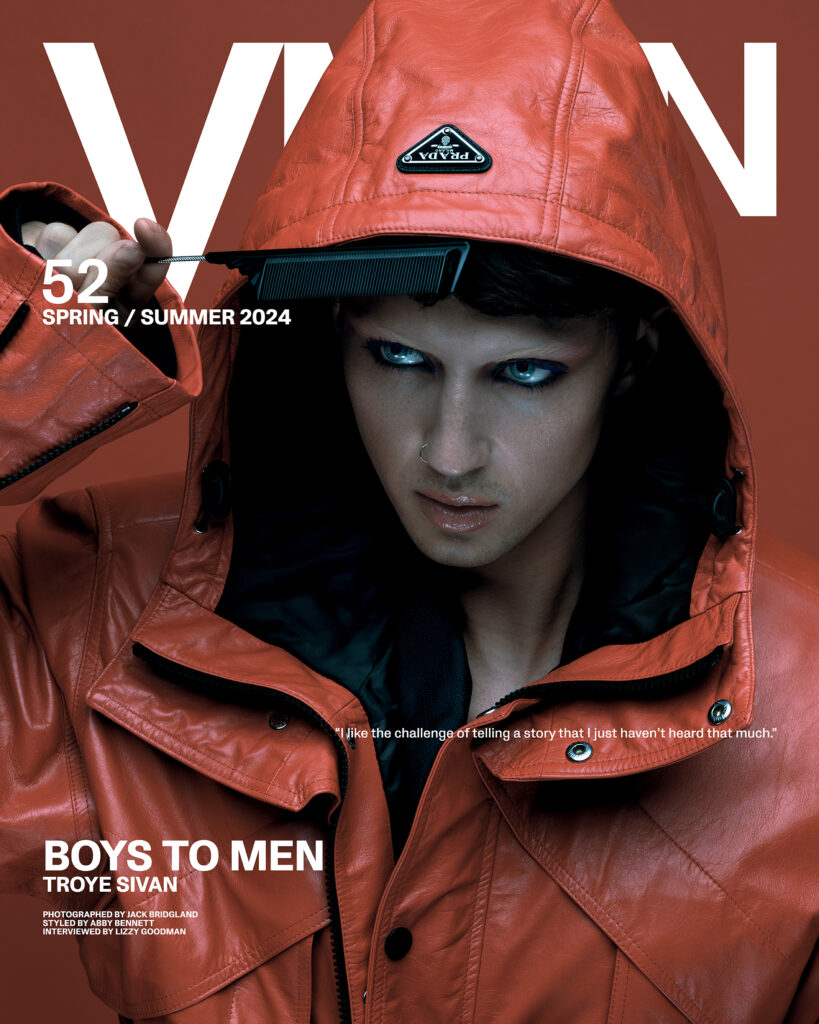
Sivan was in elementary school when he picked his stage name. Then came the YouTube videos. And by the time he was eighteen, on the eve of signing his first major label deal, he officially came out because, as he has said, “I wanted it to be out so that they couldn’t tell me to stay in the closet.” (His label congratulated him the next day.) In the decade since, Sivan grew into the role of pop boy wonder—with the voice (and face) of an angel, and the instincts of an old soul artist with many lifetimes under his karmic belt.
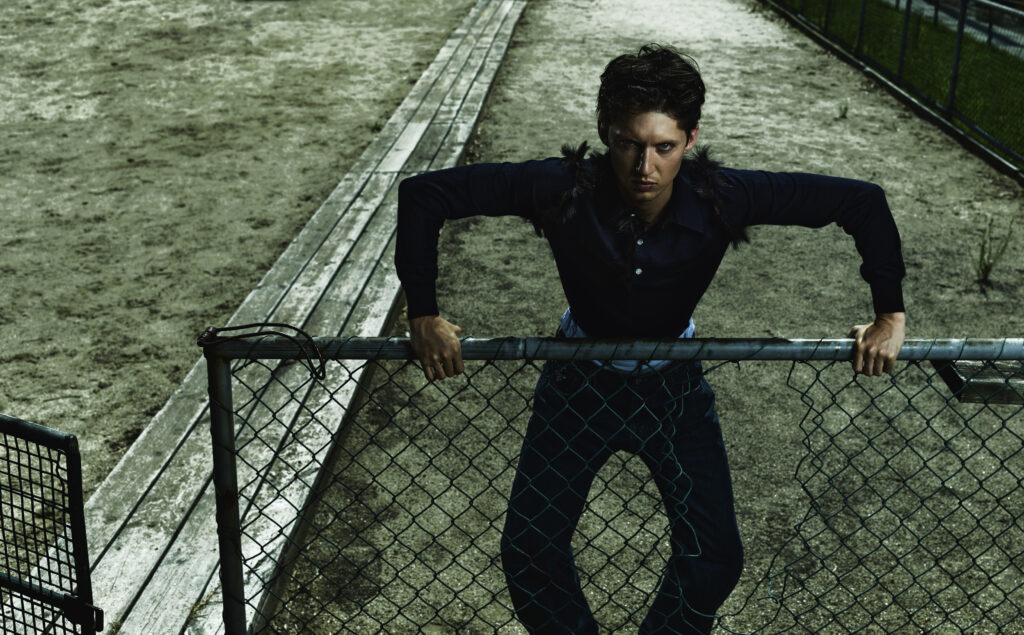
But it’s only on the 2023 release of Sivan’s third album, Something to Give Each Other, that his two sides—the boy wonder and the old soul—have truly merged. Perhaps it’s just time, and the experience, both professional (acting in TV and film, including on The Idol) and personal (Covid isolation, a breakup, most of his 20s) that came between Sivan’s second and third records, but the performer who brought us this uber-confident new pop experience is no longer a boy with extraordinary potential, he’s an artist fully inhabiting his gifts and just beginning to show us all where they can take him.
VMAN: I know you’ve been traveling around quite a bit, how are you holding up? And how is your creative brain doing? What are you focused on right now?
TROYE SIVAN: I’m actually in a really fun phase of full-time tour prep, which is so exciting. Last year and the year before it was so much about a million spinning plates and a million projects. It was really fun because it was the rollout of all of those things. The culmination. This year I get to focus a little bit more on just putting on the show that I’ve always dreamt of. I’ve kind of, like, given myself a bit of a gift.
VMAN: Yes! The pleasure of real focus.
TS: Totally. It’s little things like I have my first personal trainer session after this interview and then I’m going in the studio and we’re working on the music and we’re starting choreo soon and I’m getting to do most of it from Melbourne, which is making me really happy. The first show is May 29th, and I’m like counting down in my head. It’s a really fun and inspiring time.
VMAN: Is there a show you saw as a kid – some kind of gold-standard pop experience that has the emotional flavor you’re trying to generate with your shows this year?
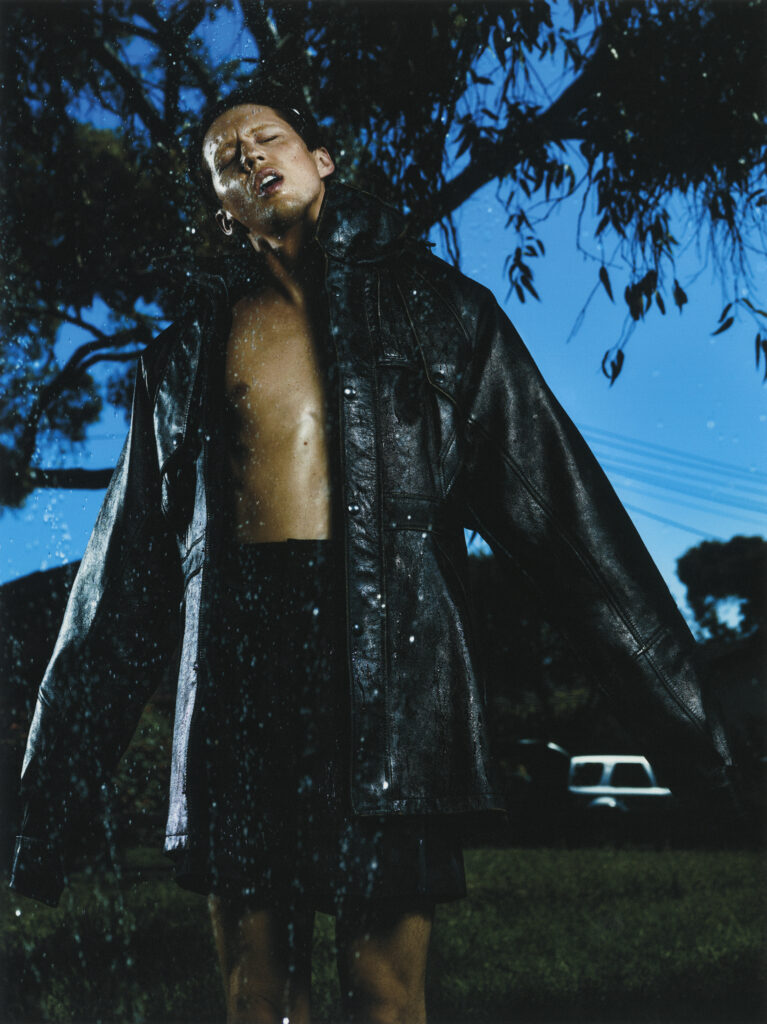
TS: This wasn’t as a kid though, but the show that I saw right before I started writing the album that really influenced the whole album and is now following into the tour was Janet Jackson at the Hollywood Bowl. That was my first time seeing Janet live and I was totally floored. Like, I’ve never seen anything like it in my life. I mean, the amount of time and effort that would have gone into that show and into every single element of it, the amount of care, it just was so mind-blowing to me. I realized, like, that’s where everyone really learned it all.
VMAN: It’s interesting to hear you say that because your music has always been, at least to me, serious and joyful at the same time. Pop music often gets misread as unserious because it’s so joyful, and that’s certainly been true of Janet in the past. So I’m just curious about how her show influenced the sound of your record?
TS: I think it was exactly what you’re talking about—like, the spirituality of pop music. I think about when I supported Robyn a couple of years ago in the US—I did LA and San Francisco—and she did this thing on “Dancing on My Own” where she muted the instrumental and had the crowd sing the chorus. And then I saw her live as well in Stockholm. Of course, in LA you’ve got the gays that are obsessed with it and dying for it and it really was that sense of community and warmth. And then seeing it in Sweden, where she may as well be the Queen, and you’ve got elderly people, you’ve got kids with families and they’re all singing to that moment, too. I take that very seriously. I think that is super, super beautiful and very profound. It really influenced the whole ethos of the album, seeing the Janet show and seeing the Robyn show. It’s like, oh no, okay, this is like, this is serious business. It made me want to write a pop album, it made me want to think about dance music and how powerful it is. It made me think about joy and sex. It really just kind of set me on the path that I’m still on now.
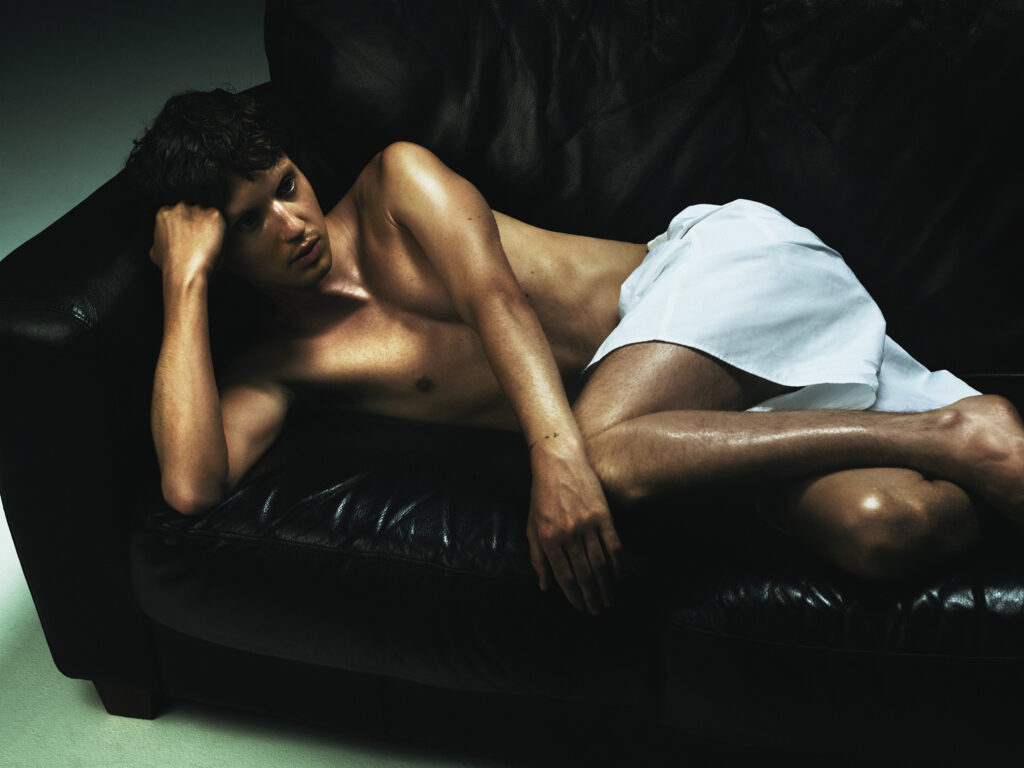
VMAN: Given that the five years between your second and third record included the Covid-19 pandemic and included—as you’ve talked about—a breakup, plus getting into acting and all the other amazing creative stuff you’ve been up to, did you feel extra pressure around the release? Did it feel like an especially big deal?
TS: Maybe I’m just really lucky but a lot of that external pressure to me feels very much like just that: external pressure. I don’t think I internalized that very much. The thing that excites me about making an album is the creative process and that has always been a very personal experience. It’s not really about anyone else, do you know what I mean? I’ve been online since I was really young, so I’m quite used to my safe audience that I know is going to show up for me. I feel like I’m making music for them and that’s a really, really nice feeling.
VMAN: You’re making music for them, but you’re also saying, you know, I make music ultimately for me. So do you think of yourself as part of “them?” Are you and your fans interchangeable in some way?
TS: They’re, like, friends of mine. I started making YouTube videos when I was 12. I’m 28. I make the music that I want to make. I make the albums that I want to make. But at the same time, the thing that’s in the back of my mind—it’s almost like an update on my life to those people. Like you said, I’ve been through a breakup, this is where I’m at now kind of thing.
VMAN: When you’re songwriting, how does it start?
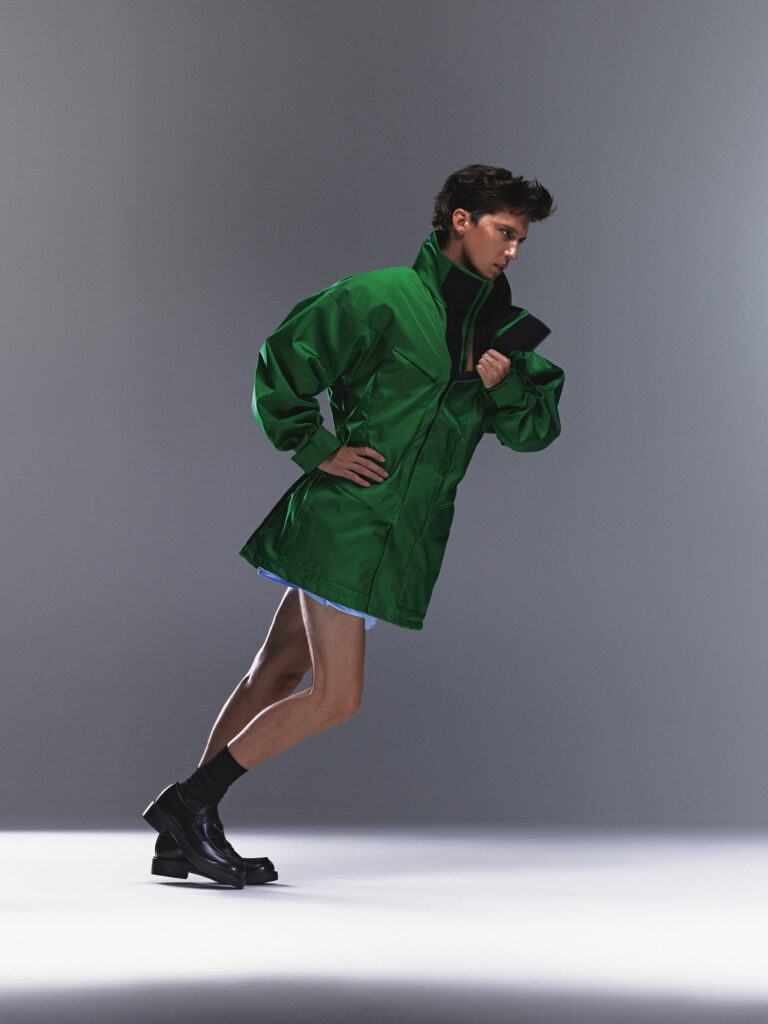
TS: So it’s literally different every single time. But I do think that the best ones are always when I just kind of like, go and don’t think too much about it.
VMAN: Do you see the movie unfolding like a movie while you’re writing?
TS: When I’m in the studio the picture really starts to come together between the production, the lyrics, the melody— when all those things start to really work together, that’s when I know that I’m excited by something. Like the “One of Your Girls” video concept, for example. Same with “Rush.” While we were recording, I’m like, oh my God … can you imagine…? It’s basically just me and Leland, who I work with on almost every song on the album, it’s us, like literally queening out being like, gag, can you imagine!? And we go with that.
VMAN: There’s no better feeling than when you’ve opened something up creatively that has a long runway in front of it.
TS: Totally. You know those funny memes about people listening to sad music and staring out the window in the car pretending they’re in a music video? That’s what I’m doing but it’s just I get to actually make the music video.

VMAN: You said earlier that you are interested in stories that don’t always get told. Do you mean underrepresented narratives, or do you also mean aspects of our inner lives as humans that are under-expressed? What does that notion of an untold story really mean to you and to what extent does it have to do with gender and sexual identity?
TS: It’s very easy to pull from my own story, and chances are that story hasn’t been told that much because there haven’t been that many openly gay pop singers. But, for example, I’ve got a ballad on Bloom called “The Good Side” that’s about getting the better side of a breakup. It’s this breakup song, but also talking about how lucky you got in that situation, and having empathy for the other person, and being like, ‘by the way, I know that this must really suck for you and I apologize’. A song like that is so fulfilling to write because it just felt so, so, so real to what was going on and I had never heard that perspective. “One of Your Girls,” is obviously very specifically gender-y and sexuality-based and completely true to me. But “The Good Side” is an experience that’s not really about that stuff, it’s just a love song. I really like the challenge of telling a story that I just haven’t heard that much.
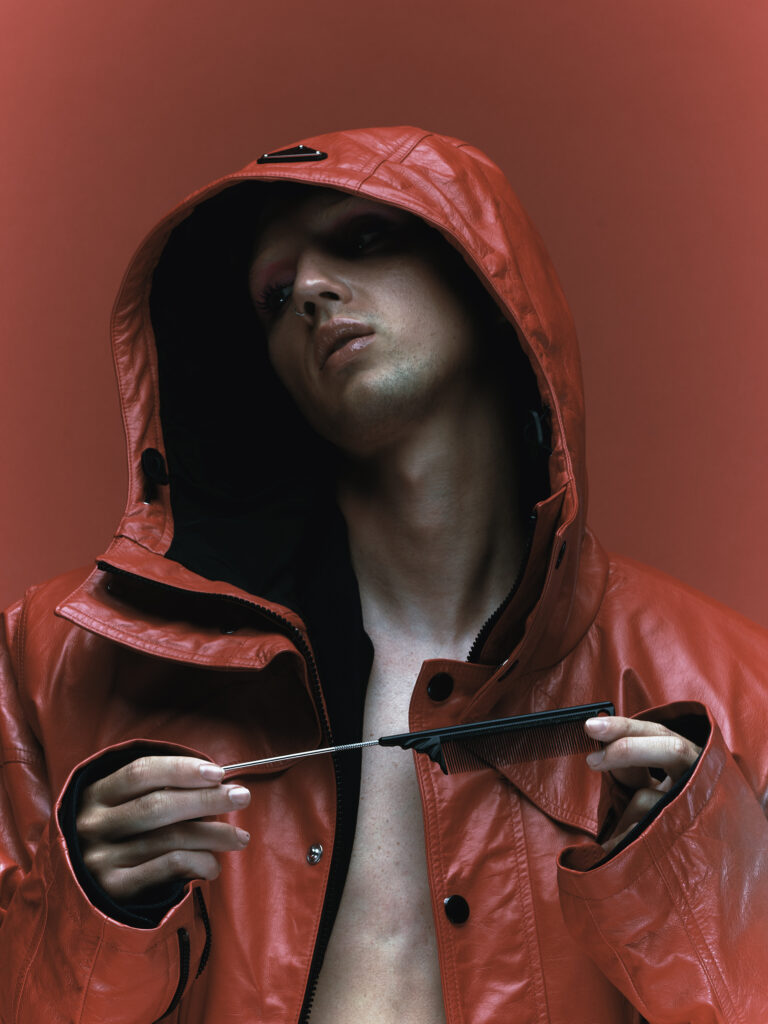
VMAN: Okay, final question, returning to the theme of the day, which is your tour and everything we’re going to get to see from you in 2024. Do you have in mind what you want people to do when they leave your show? Should they go out? Should they make out? What mood are you setting?
TS: My actual dream is that people are walking out of the show with people that they’ve met at the show, exchanging numbers. And then whatever they want to do with the rest of the night is up to them. I often will meet people and they’ll be like, ‘oh, we met at your show in Paris in 2016 and we’ve been best friends ever since.’ That kind of stuff really means the world to me.
This cover story appears in the pages of VMAN 52: now available for purchase!
Photography Jack Bridgland
Creative Direction Stephen Gan
Fashion Direction Gro Curtis
Fashion Abby Bennett
Makeup Gillian Campbell (Artist Group)
Hair Fernnando Miranda using Kevin Murphy & Dyson Hair
Senior producer Anthony Federici (Petty Cash Production)
Producer Rachel Oliver
Digital technician Jake Nemirovsky
Lighting director Ryan Hackett
Photo assistants Jeremy Kees Orr, Jax Oliver
Production assistants Matthew Stott, Mae Hatrick
Retouching Christina Martinez (Picturehouse)
Location Tamale Studios
Discover More








